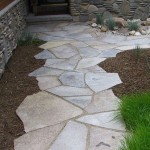How To Level Ground For Concrete Patio Slabs In NY
Creating a concrete patio involves meticulous planning and preparation, especially in a region like New York where frost heave and varying soil conditions are common. A well-levelled base is crucial for ensuring a stable and visually appealing patio slab. This guide will outline the key steps involved in preparing the ground for your concrete patio in New York.
1. Planning and Site Preparation
The first step is to carefully plan your patio's size, shape, and location. Consider factors such as sun exposure, drainage, and the proximity to existing structures. Once you have determined the desired dimensions and position, mark the area with stakes and string lines. Remove all vegetation, including roots and debris, from within the marked area.
Prior to excavation, it's essential to perform a soil test to determine the composition and underlying soil conditions. This information will guide the excavation and base preparation, ensuring stability and preventing future settling or heaving. Contact your local extension service or a qualified soil testing laboratory for assistance.
2. Excavation and Compaction
With the site cleared, excavate the ground to the desired depth, accounting for the thickness of the gravel base, sand layer, and concrete slab. The recommended depth for a standard patio slab in New York is typically 6-8 inches, but it can vary based on local frost line requirements and engineering recommendations.
After excavating, compact the soil thoroughly using a plate compactor or a hand tamper. This process eliminates air pockets and ensures a stable foundation. Ensure the soil is compacted to a specific density level, which can be determined by a soil compaction test. Local building codes may specify required compaction levels for various soil types.
3. Base Preparation
After compaction, create a drainage layer by spreading 4-6 inches of compacted gravel over the excavated area. This layer helps to prevent water from pooling beneath the patio slab, reducing the risk of frost heave and erosion. Ensure the gravel is evenly distributed and compacted to the desired density.
Next, add a 2-3 inch layer of sand over the gravel base. This layer provides additional support and helps to level the base before pouring the concrete. Use a level and a tamper to create a smooth and even surface.
4. Setting Forms and Installing Rebar
Before pouring concrete, create a framework using form boards to define the perimeter of the patio slab. Secure the forms with stakes and ensure they are level and plumb using a level and plumb bob. If you are planning on introducing additional decorative elements, such as steps or benches, incorporate these into the formwork during this stage.
For added strength and to prevent cracking, install rebar within the formwork. Rebar is typically placed in a grid pattern, with spacing determined by engineering requirements. Secure the rebar to the formwork using wire ties to keep it suspended from the bottom of the concrete slab.
5. Pouring and Finishing Concrete
Once the forms are in place and the rebar installed, you are ready to pour concrete. If you are planning on using a concrete pump, ensure the access point is clear and the hose length is sufficient. If you are hand-pouring the concrete, use a wheelbarrow to transport the concrete to the forms.
After pouring, use a screed board to level the concrete and create a smooth surface. Remember to vibrate the concrete to remove air pockets and ensure proper compaction. Finally, use a trowel to finish the surface. This process may require multiple stages, including floating and finishing, to achieve the desired texture and smoothness.
Following pouring, allow the concrete to cure properly, protecting it from weather elements and foot traffic. Curing time can vary based on temperatures, humidity, and the type of concrete mix. Consult with your concrete supplier for specific curing recommendations.
By carefully following these steps, you can ensure a level and stable base for your concrete patio slab in New York, maximizing its longevity and visual appeal. Remember to consult with local building codes and seek guidance from qualified professionals for any specific questions or complex projects.
Dammann S Garden Company Diy Series How To Install Level Pavers And Patio Stones

Concrete Slope For Exterior Slabs How To Ensure Proper Drainage Network

How To Level The Ground For Base Prep Pavers Perfect Patio Series Part 2 Diy

Best Fill Under Concrete Slabs Gravel Subbase Network

When Do You Need Concrete Leveling A 1

How To Level A Concrete Slab In 15 Minutes
Dammann S Garden Company Diy Series How To Install Level Pavers And Patio Stones

How To Prep Form Pour A Concrete Slab For Beginners Start Finish

9 Things You Should Know About Patio Pavers Unilock

How To Install Pavers On Top Of Concrete Or Asphalt
Related Posts








